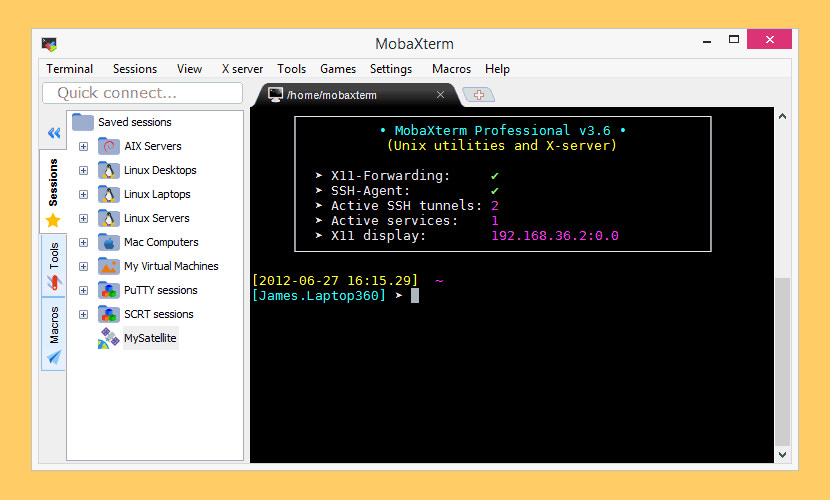
- Terminal emulator mac os x how to#
- Terminal emulator mac os x mac os x#
- Terminal emulator mac os x software#
- Terminal emulator mac os x Pc#
This port should be exposed only during terminal sessions, when a cable is connected to the port.

When a cable is connected to this port, the router interior is exposed to environmental elements, which can damage the port and the router interior. About the Console PortĬaution: The console port does not support cable glands.
Terminal emulator mac os x Pc#
■ Connecting to the Console Port with Linux Before You Beginīefore you start a terminal session with the router, you must connect a PC or PC terminal to the router console port by following the instructions in Connecting the Console Port.
Terminal emulator mac os x mac os x#
■ Connecting to the Console Port with Mac OS X ■ Connecting to the Console Port with Microsoft Windows Start a terminal session with the router when you are at the router installation location and want to administer the router with a direct connection using the command-line interface (CLI) software.
Terminal emulator mac os x how to#
It is the default shell on Linux and Mac OS X, and has even made the jump to Windows via Cygwin.This section describes how to start a terminal session with the Cisco 1240 Connected Grid Router (CGR 1240 or router) using the console port.
Terminal emulator mac os x software#
In summary: login shells read files like *profile*, non-login shells read ~/.bashrc, and you should fix Terminal.app.īash is a shell originally written by Brian Fox at the Free Software Foundation in 1988. This can be remedied by accessing the Preferences window and, under Startup, specifying that shells should open with /bin/bash and not a login shell. In the terminal emulator packaged with OS X (Terminal.app), new windows are by default opened with login shells. Unfortunately, this customary behavior isn't adhered to by Mac OS X. This makes non-login shell customizations available to login shells. But if you want to share declarations and/or aliases across all interactive shells (login or not), you should put this in your. It is assumed that by running the emulator program, you have already logged in. On Linux, it is customary for terminal emulators not to declare their interactive shell processes as login shells. This is why you should keep any output-producing commands in the files read by login shells (. bashrc and will fail spectacularly if any part of. bashrc, but scp and rcp aren't as well-behaved. Well-behaved scripts or programs that use Bash don't attempt to load. This is essential because, when running autonomously, a shell's standard streams might be redirected, and aliases or environment variables could confound running scripts. Non-login shells read ~/.bashrc, and non-interactive shells try not to read any files. When login shells exit, they read ~/.bash_logout. Here's the standard behavior: login shells always look for the bash configuration files with "profile" in the name, in this order: /etc/profile, ~/.bash_profile, then ~/.bash_login and lastly ~/.profile. Bash processes spawned from login or started with the "-" or "-login" flags believe they are login shells. The second condition is whether your shell is declared as a login shell. This condition holds true most of the time the exception is when you run Bash with the "-c" flag: $ bash -c /usr/bin/something A session runs interactively when the standard streams are actually connected to a terminal. The first is whether your shell is running interactively. When it comes to setting up your command line environment in Bash, there are two conditions by which Bash decides which files to read at startup.


 0 kommentar(er)
0 kommentar(er)
